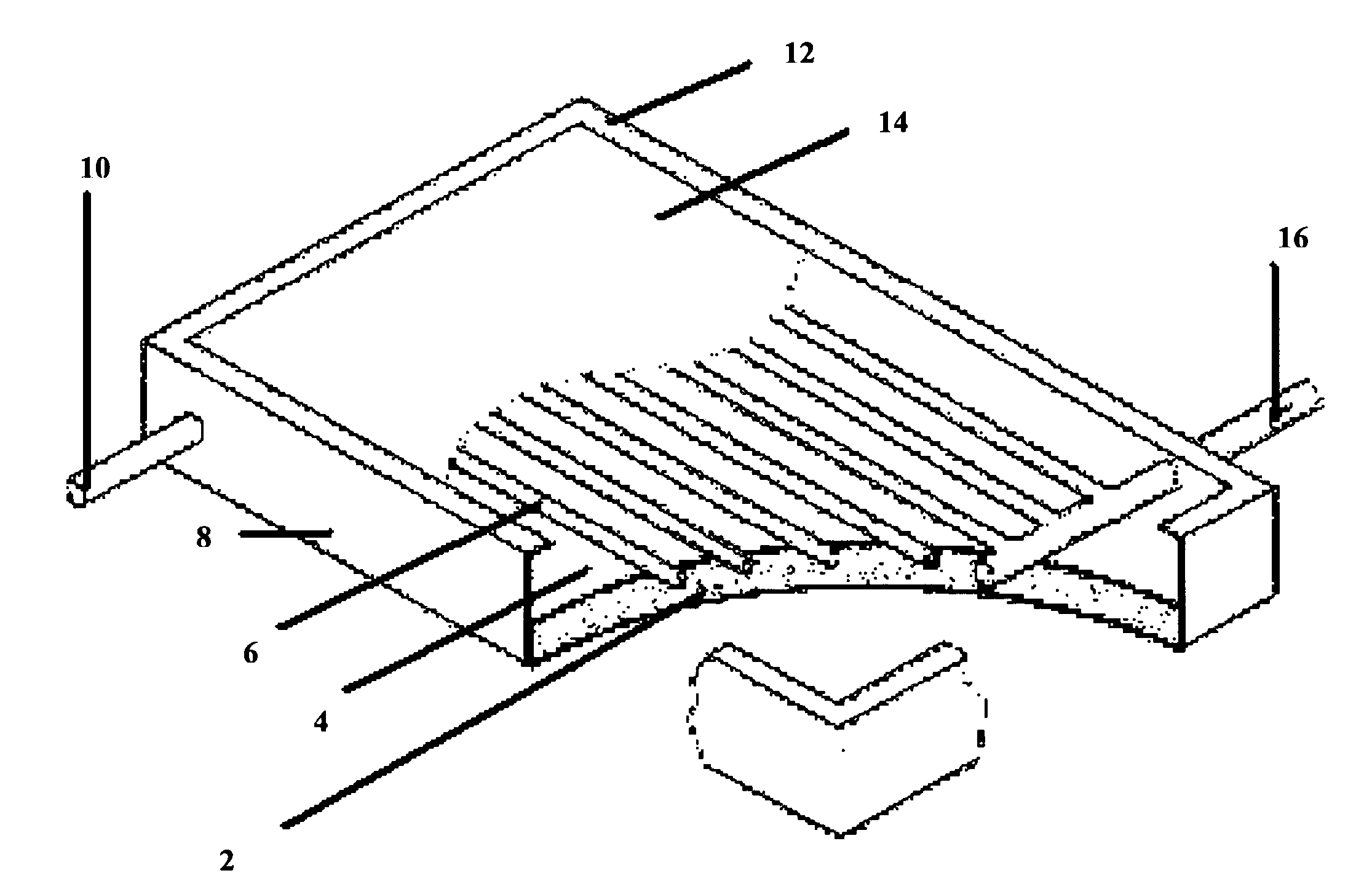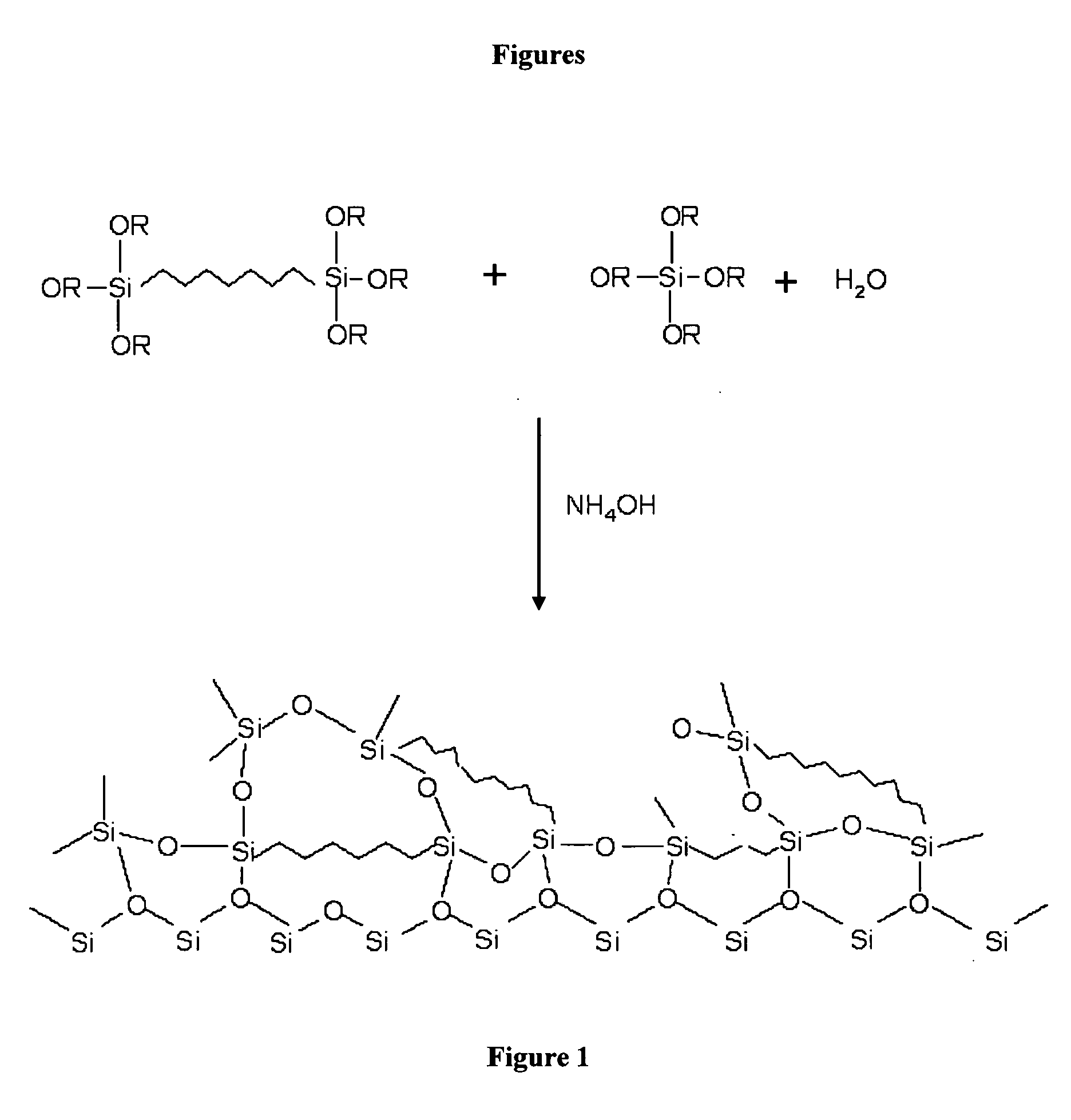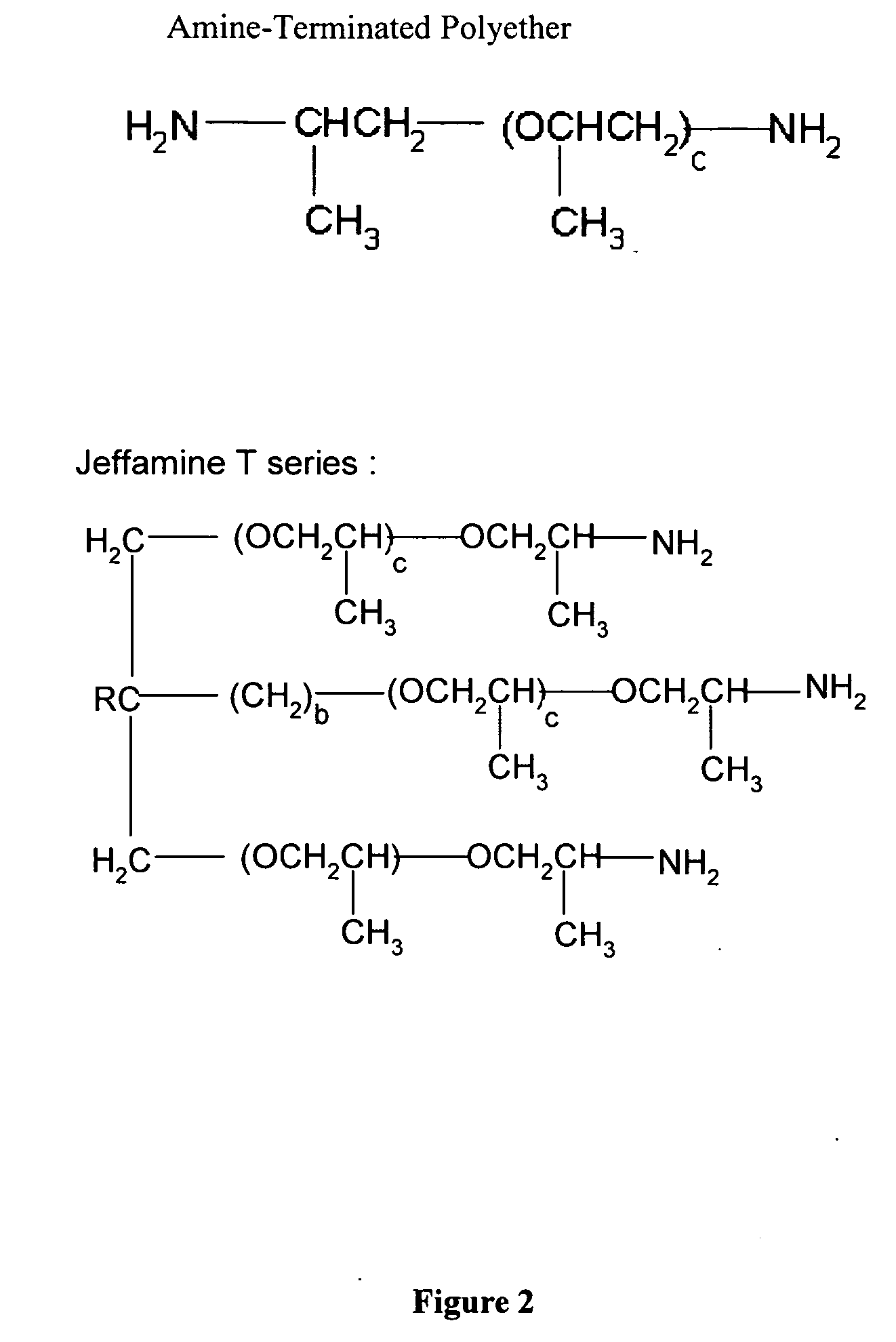Transparent assemblies with ormosil aerogels
a technology of ormosil and aerogel, which is applied in the direction of solar radiation prevention, instrumentation, thermal insulation, etc., can solve the problems of inability to produce transparent aerogel composites, collapse of filigranes, and inability to use the mixture generally used to prepare xerogel to prepare aerogels. , to achieve the effect of improving various physical and mechanical properties
- Summary
- Abstract
- Description
- Claims
- Application Information
AI Technical Summary
Benefits of technology
Problems solved by technology
Method used
Image
Examples
example 1
[0065] This example illustrates the formation of a triethoxysilyl terminated polyether. 46.0 g of 3-isocyanatopropyltriethoxysilane was added to a mixture of 400 g of amine-10 terminated polyoxypropylene diols (Jeffamine®XTJ510, Mw=4000, commercially available from Hutsman corporation) and 400 ml of anhydrous THF, following by vigorous stirring at ambient temperature. The completion of this reaction can be monitored by IR spectroscopy. It was observed that the strong and narrow band at 2274 cm−1 assigned to the vibration of isocyanate group of the to 3-isocyanatopropyltriethoxysilane disappeared at the end of the reaction (approx 1 hour). Example 1 serves as an exemplar for the source of the linear polymer.
example 2
[0066] This example illustrates the formation of a triethoxysilyl terminated 20 polyoxypropylene. 49.47 g of 3-isocyanatopropyltriethoxysilane (Aldrich) was added to a mixture of 200 g of amine-terminated polyoxypropylene diols (Jeffamine® D2000, Mw=2000, commercially available from Hutsman corporation) and 200 ml of anhydrous THF, following by vigorous stirring at ambient temperature. The completion of this reaction can be monitored by IR spectroscopy. It was observed that the strong and narrow band at 2274 cm−1 assigned to the vibration of isocyanate group of the to 3-isocyanatopropyltriethoxysilane disappeared at the end of the reaction (less than 0.5 hour). Example 2 serves as an exemplar for the source of the linear polymer.
example 3
[0067] This example illustrates the formation of a polyoxypropylene modified silica aerogel monolith with 5 wt % loadings of polyoxypropylene (Mw2000). 25 g of water were added to a mixture of 52.7 g tetramethylorthosilicate (TMOS), 1.7 g of the polymer from Example 2 and 350 ml of methanol, following by 1 hour mixing at ambient temperature. The combination was gelled by addition of 0.6 g formamide and 6.0 g ammonia methanol solution (15.4 wt % ammonia). The resultant gels were first aged in ammonia ethanol solution (4.85 wt %) at ambient temperature, followed by aging in hexamethyldisilazane (5% v / v) solution for 3 days at ambient temperature. The gels remained highly transparent after CO2 supercritical extraction. The average thermal conductivity of the resultant aerogel monoliths was 13.1 mW / m·K under ambient conditions, and the average density of these monoliths was 0.07 g / cm3.
PUM
| Property | Measurement | Unit |
|---|---|---|
| optical transmittance | aaaaa | aaaaa |
| pore sizes | aaaaa | aaaaa |
| pore sizes | aaaaa | aaaaa |
Abstract
Description
Claims
Application Information
 Login to View More
Login to View More - R&D
- Intellectual Property
- Life Sciences
- Materials
- Tech Scout
- Unparalleled Data Quality
- Higher Quality Content
- 60% Fewer Hallucinations
Browse by: Latest US Patents, China's latest patents, Technical Efficacy Thesaurus, Application Domain, Technology Topic, Popular Technical Reports.
© 2025 PatSnap. All rights reserved.Legal|Privacy policy|Modern Slavery Act Transparency Statement|Sitemap|About US| Contact US: help@patsnap.com



